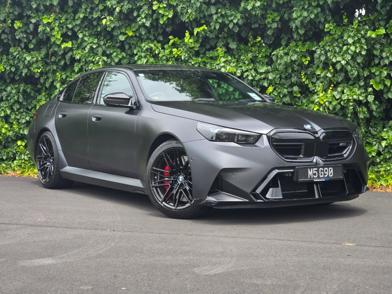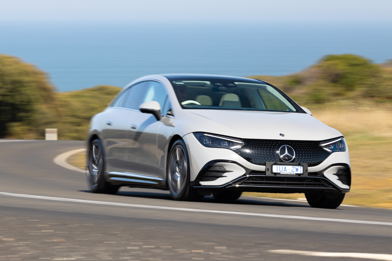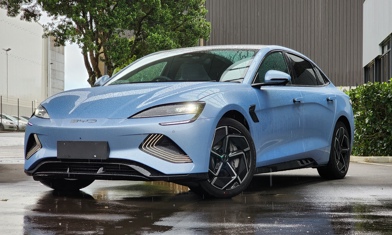It’s fair to say that BYD has taken New Zealand by something approaching a storm in the last couple of years. Partly thanks to offering great EV technology at Clean Car Discount (CCD) prices, but also partly because the cars are of consistently impressive quality.
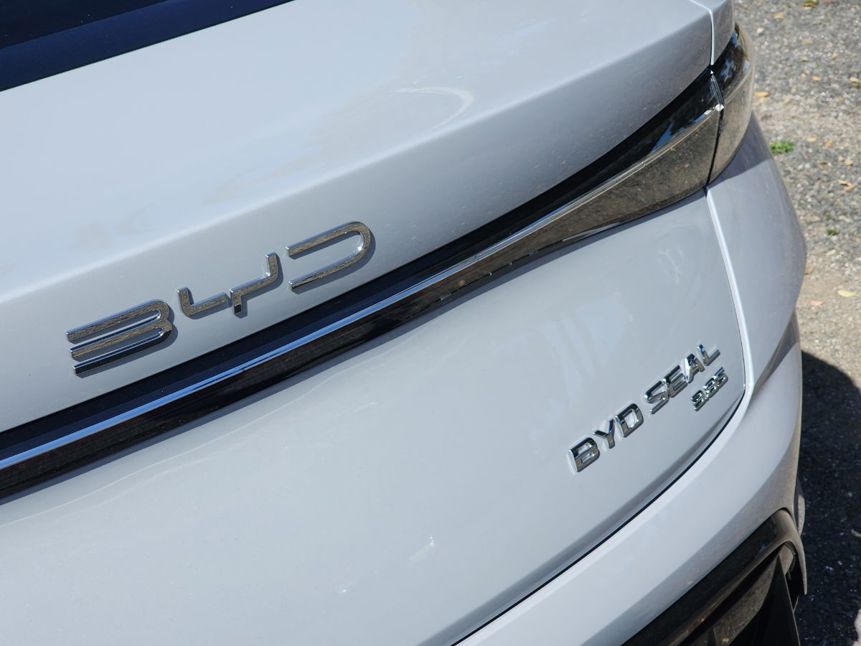
The Atto 3 was named the Kiwi Motoring Writers Guild Car of the Year (COTY) in 2022 and AA DRIVEN COTY named it the best battery electric vehicle (BEV). This year, we gave the BEV gong to the smaller Dolphin and it even made our top three overall.
As we all now know, there will be no CCD from January 2024; BEV sales will inevitably slow for a while, but BYD is surely in a better position than most electric brands to keep that momentum going. Move a little upmarket even.
Enter the Seal sedan. With deliveries scheduled to start in January, this is the first model launched by BYD NZ where the CCD is irrelevant. There are a couple of models that could have made the cut: the $62,990 Dynamic RWD and even the mid-range $72,990 Premium AWD. But not the car you see here: the $83,990 Performance AWD. Or $86,990 with the Shark Grey paint colour pictured.
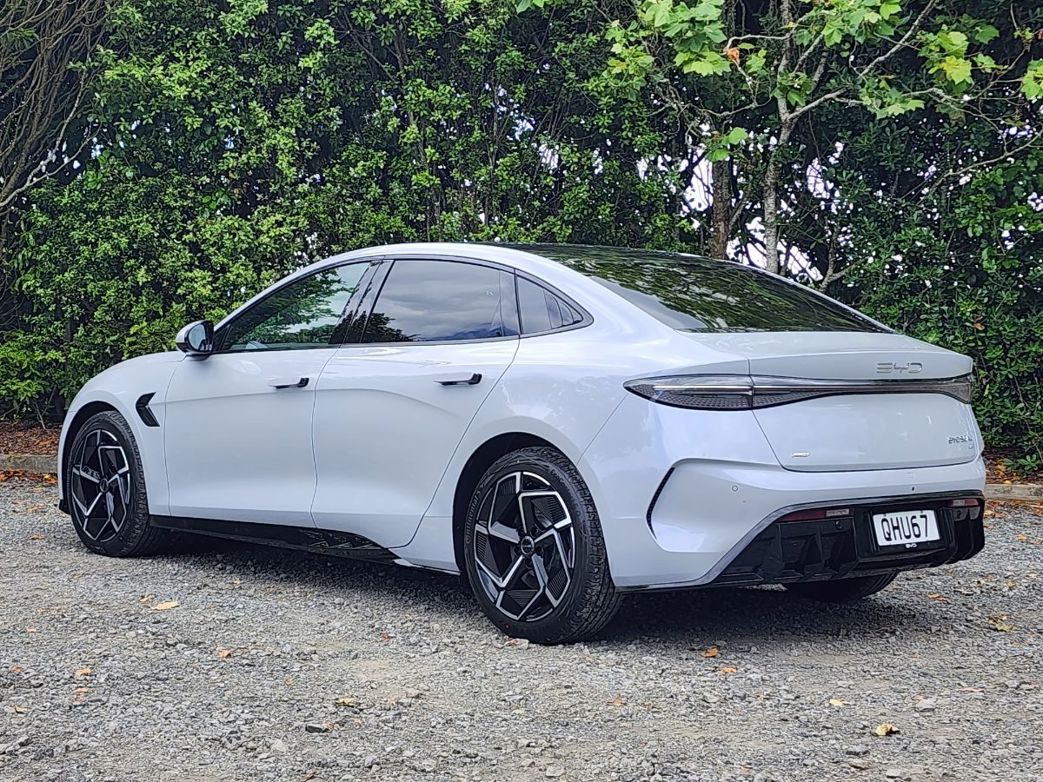
That’s a heck of a jump up from the likes of the $60k Atto 3 extended range, albeit one BYD NZ has tried to bridge a little with its locally developed Atto 3 Tachyon.
The BYD could stand on looks (apologies to Porsche Taycan perhaps) and performance alone.
But the big question is whether any BYD can convincingly carry an $84k pricetag. Let’s get straight to the point and say… yes. The Seal Premium is a pretty compelling machine in so many different ways.
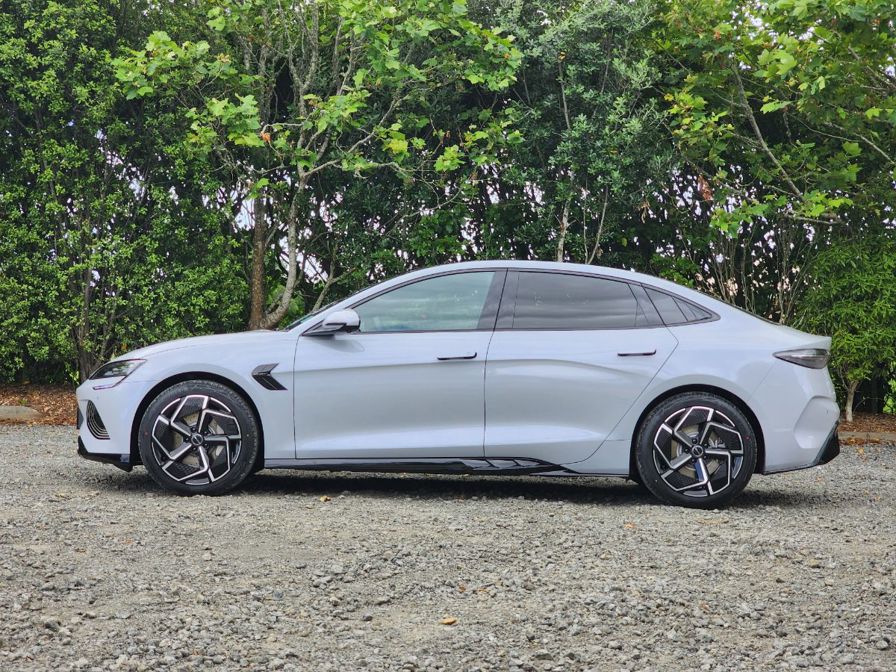
It’s a sedan in an SUV market. But that’ll be a nice point of difference for some, and don’t forget sedans are actually still pretty popular in China and Europe. More to the point, the Tesla Model 3 is a sedan and BYD has been very clear about this car being a direct response to that car. You also have to put the Hyundai Ioniq 6, Polestar 2 (okay, that one has a bit of hatch at the back) and even BMW i4 into the frame.
Seal is the first BYD to be built around Cell To Body (CTB) technology, which means the Blade battery is actually part of the structure of the car.
The BYD could stand on looks (apologies to Porsche Taycan perhaps) and performance alone. Zero to 100km/h in 3.8 seconds is faster than many supercars of 20 years ago and it’s delivered in that effortless (if initially alarming for passengers) EV way. So that’s the party trick and in case you forget, it’s written on the bootlid: “3.8S”.
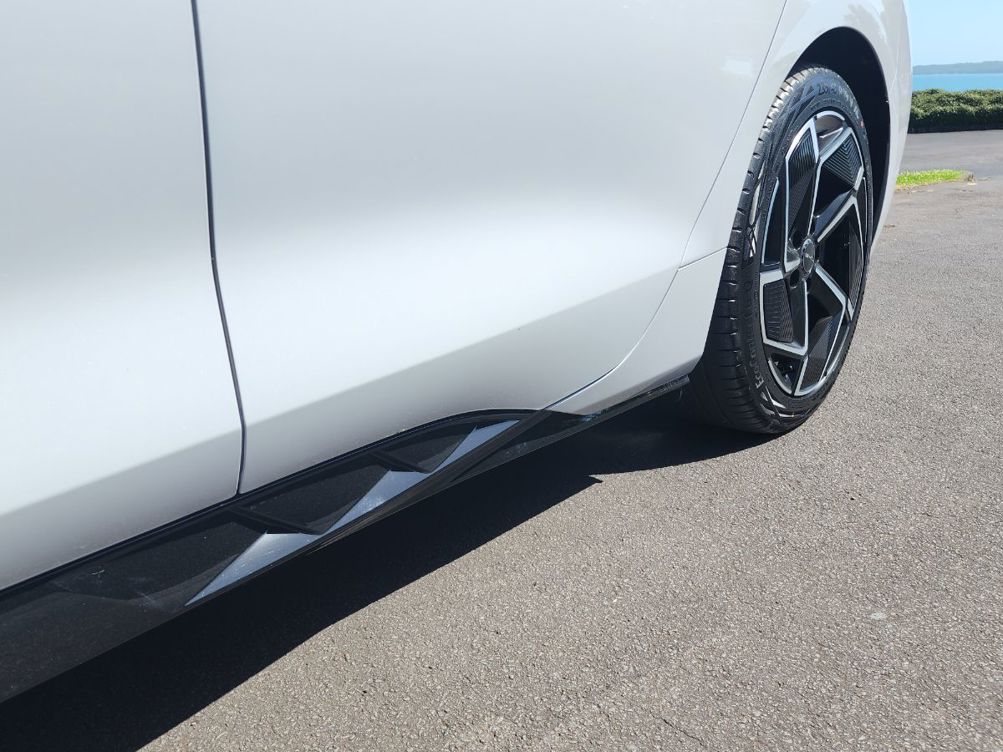
And while we’re on the (P)erformance thing, this Seal does have the chassis to cope with all that performance. The steering is not brilliantly communicative (you can weight it up more with the Sport setting), but it’s accurate; and the Performance is astonishingly grippy in corners, thanks partly to the fast-acting AWD system.
iTAC is essentially an advanced form of torque vectoring: it can rapidly shift power around to maintain momentum.
Some of the credit must go to the strength of the platform: Seal is the first BYD to be built around Cell To Body (CTB) technology, which means the Blade battery is actually part of the structure of the car – not just inserted into it.
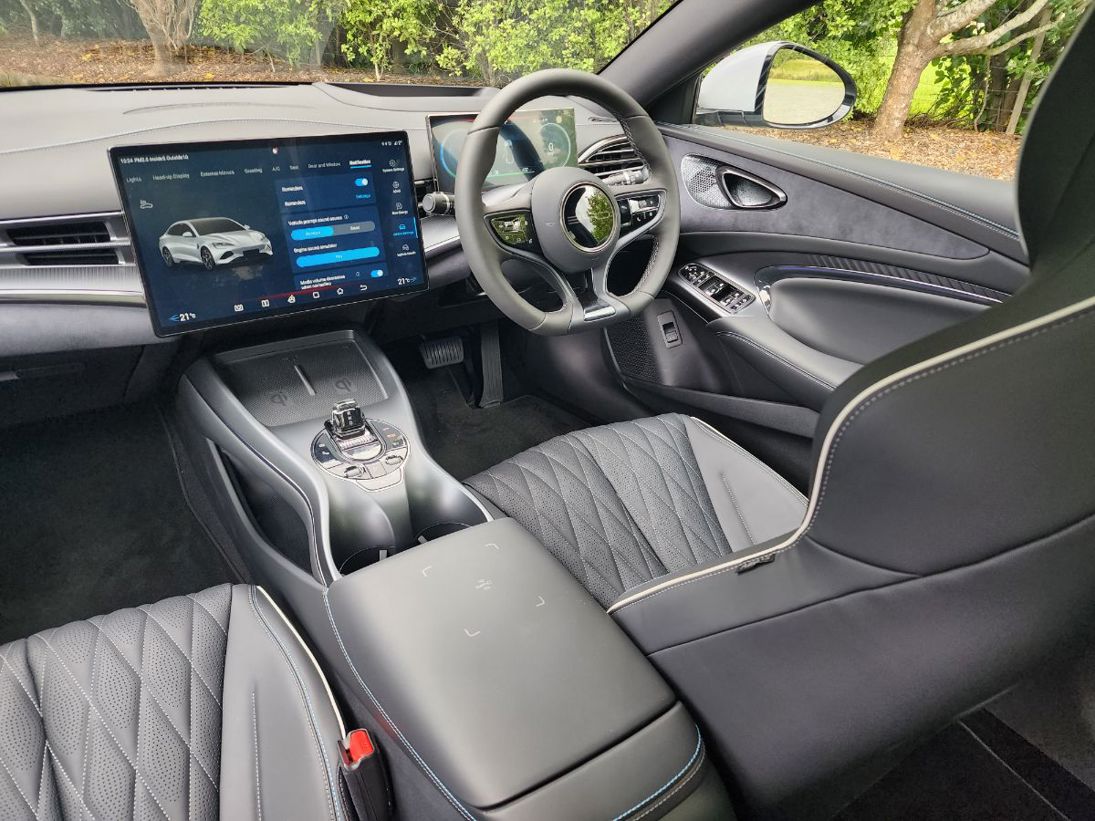
The Seal also has something called intelligent Torque Adaption Control (iTAC), which is essentially a very advanced form of torque vectoring: rather than reducing power to restore stability, it can rapidly shift power around (or even apply more power) to maintain momentum.
We’d love to tell you more, but after a hurried handover we failed to realise you actually need to activate iTAC in the infotainment menu, leading to a “duh” moment as our test time drew to an end. Why it wouldn’t be active all the time we don’t know, but our bad; we’ve been promised some time to explore this tech (a racetrack was mentioned)… we’ll take it.
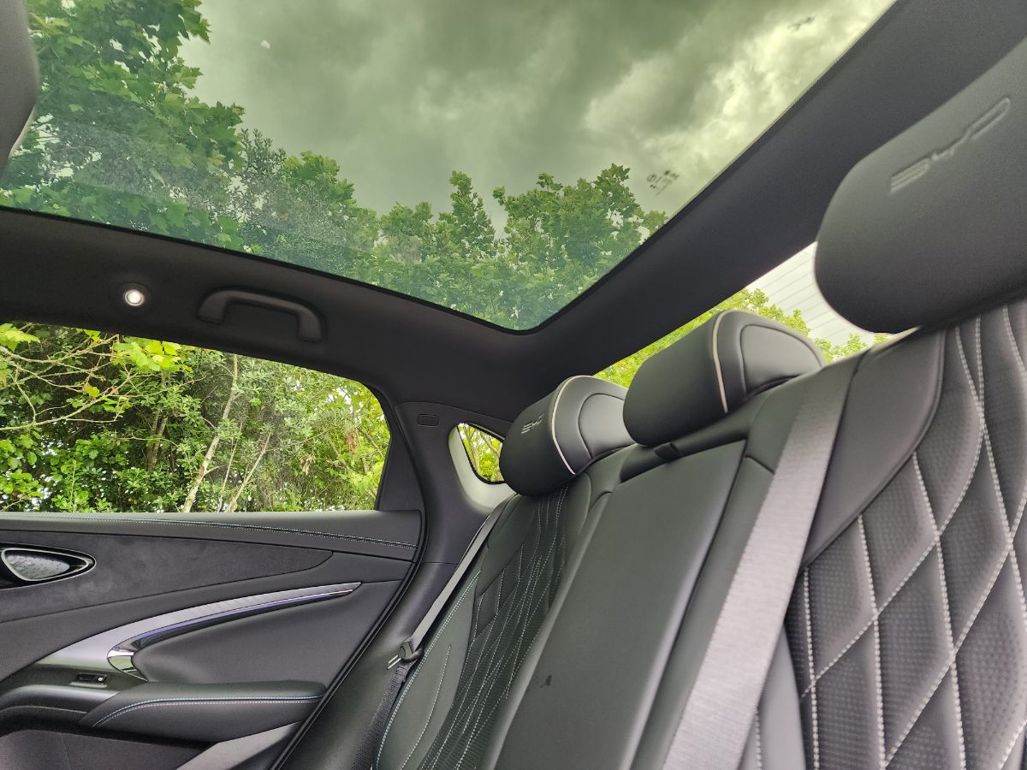
But when all the excitement is done, the Seal Performance does luxury pretty well too. The cabin design will be familiar to those who own a Dolphin or Atto 3, but it’s all done in the best possible taste, with a quality feel to the materials and really impressive sports-style front seats – which is a BYD thing because the chairs in the Dolphin and Atto 3 are also really good (we say that after a 1000km day in the latter last year).
There are a bewildering number of settings in the infotainment menu (right down to telling the climate control just how you’d like your cool air delivered, in excruciating detail) and the usual mini-annoyances, like the overspeed warning that you have to switch off manually every time you get in the car, unless you are planning to never hit that 30km/h urban limit. But a lot of this is just modern EV stuff.
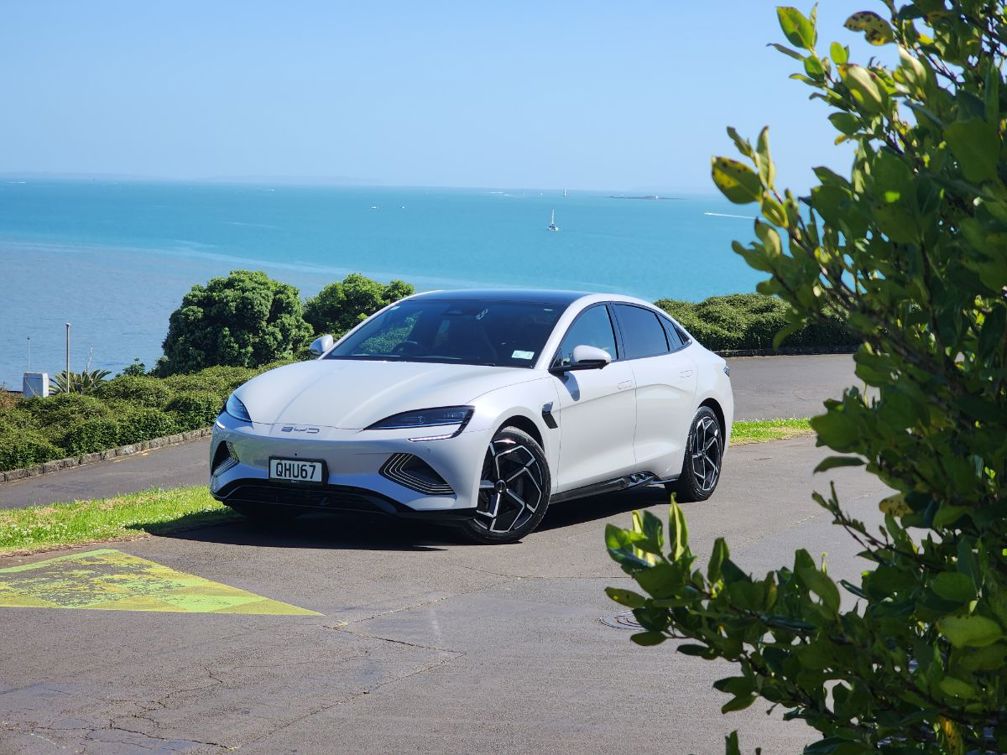
Only brand snobs could deny that the Seal Performance is a convincing rival to not just the likes of the Tesla Model 3, but also much more expensive premium-brand European sedans. And 0-100km/h in 3.8sec does settle a lot of arguments.
BATTERY: 82kWh battery with dual electric motors POWER: 390kW/670Nm GEARBOX: Single-speed automatic, AWD 0-100KM/H: 3.8sec RANGE: 520km (WLTP), maximum charge rate 150kW PRICE: $83,990
How much is the BYD Seal Performance?
The Seal Performance is $83,990 and the fastest model in the range by far. Which helps explain the near-$10k leap from the Premium model.
What are the key statistics for the BYD Seal Performance powertrain?
Two motors so twice the fun: 390kW/670Nm from the AWD setup, giving 0-100km/h in a deeply impressive 3.8sec (which is written on the bootlid!).
Is the BYD Seal Performance efficient?
Despite the serious go, the Seal Performance still eeks 500km-plus out of the 82kWh battery, so it’s on a par with more mainstream (much slower, in other words) EVs in terms of efficiency.
Is the BYD Seal Performance good to drive?
It’s fast and fun for sure. Not an out-and-out sports sedan, but the precise handling and a really strong structure make this a solid machine on the open road. The chassis can certainly cope with the straight-line performance.
Is the BYD Seal Performance practical for a sedan?
Suprisingly, the ride’s still really good despite the performance focus. It’s a low-slung sedan (and proud of it), so getting in and out is more of a challenge than your average family SUV. But the long wheelbase and flat floor make for a spacious interior once you’re the back seat; legroom is vast, although there’s not much space under the front seats for rear occupants’ feet.
Maximum luggage capacity is a reasonable 400 litres, but the opening is narrow and the cargo area quite shallow; but there are two small bonus bins underneath the boot floor, one for small items and another (another layer down!) with the tyre repair kit. There’s also a 50-litre frunk under the bonnet, which is ideal for storing cables or the emergency charger.
What do we like about the BYD Seal Performance?
It’s an impressively complete package that convincingly takes BYD upmarket in NZ: impressive quality and comprehensive standard equipment. Love the speed/power of course, but also the fact that the chassis is up to the task of deploying it in the corners. The battery tech is state of the art for an EV at any price.
What don’t we like about the BYD Seal Performance?
The styling is sharp but you could also argue it’s a greatest hits of other companies’ best work. Some of the infotainment menus are a bit murky and the boot is merely average (but we do like the hidden compartment).
What kind of person would the BYD Seal Performance suit?
Somebody who’s invested in the BYD image of new-tech, wants to rebel against the world domination of SUVs and enjoys some eco-luxury with a garnish of super-fast acceleration. Or just somebody who wants to annoy Tesla Model 3 owners.



















